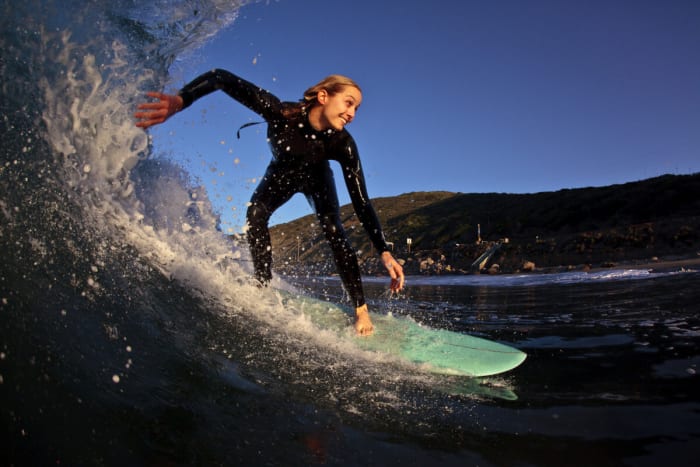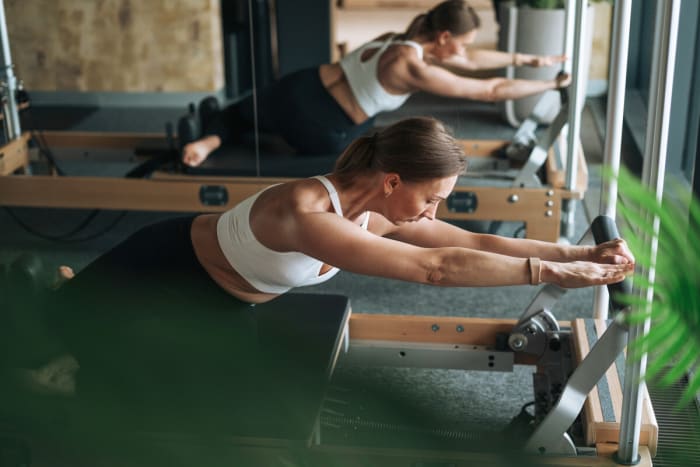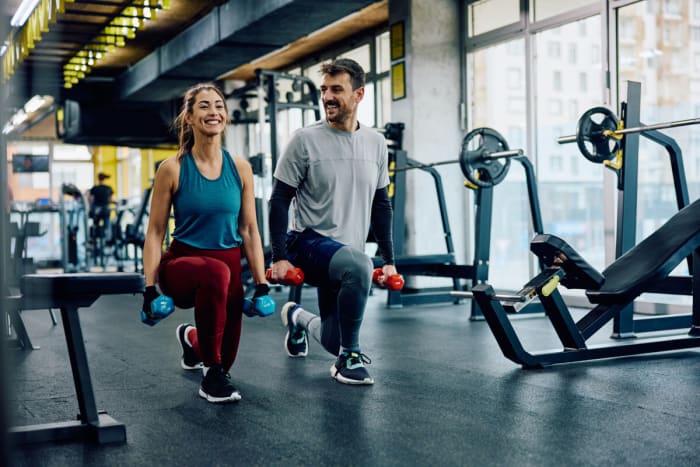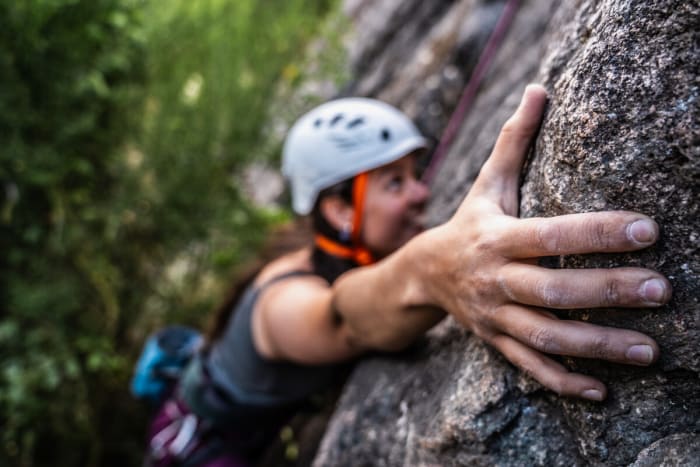While we all wish we could just *go* skiing and have all the muscles to do it, the unfortunate reality is that cross-training will not only make you a better skier but also allow you to ski for longer and help prevent injury.
Luckily, there are a lot of ways to cross-train for skiing that are still pretty fun and quite a few of them still involve playing in the mountains. There's also something to be said for diversity of movement and how it can positively affect our bodies. If you only go skiing every day, odds are your leg muscles will be pretty strong, but there are likely a lot of other parts of your body that could use some TLC. Strength isn't everything and there's a lot to be said for flexibility and mobility as well.
So, whether it's off-season and you need a new hobby to help you stay in shape for skiing or ski season is coming up quickly and you're trying to build those muscles back, here are a few ways to cross-train for skiing.
Want to keep up with the best stories and photos in skiing? Subscribe to the new Powder To The People newsletter for weekly updates.
1. Trail Running
Trail running is a simple and low-entry-cost way to cross-train for skiing. If your garage is already too full of ski gear to pick up another sport, trail running has pretty minimal gear needs, and it's pretty easy to find good trails to run on in most areas. Trail running is also an excellent way to get outside and into the mountains during summer and off-season from skiing.
On the fitness side, trail running is a great way to increase cardiovascular health and endurance and strengthen muscle groups that skiing uses as well. Running on and navigating rocky or technical terrain can build muscle in your glutes, hamstrings, quads, and calves, all of which are essential to skiing. Trail running also does great work for core strength and hip flexors, which can be a real asset for ski touring and backcountry skiing.
Bonus: Ski brands like Salomon, Dynafit, Tecnica, Black Diamond, and La Sportiva also make trail running gear. Some would say that if you have a ski boot brand that fits your foot particularly well, odds are good their other footwear will as well, so it's worth checking out if your ski boot brand makes a trail shoe.
2. Cycling
If Skimo never appealed to you but you're still hoping to don spandex and go fast, cycling is a great way to cross-train for skiing.
Whether you're riding road or gravel, cycling helps strengthen key leg muscles, increase endurance and cardio health, and strengthen core muscles. One of the biggest benefits of cycling for skiers is that it's also a low-impact sport and great for the health of your knees.
If you've ever torn a knee ligament, you know one of the first things you're allowed to do is ride a stationary bike. Why not take those healthy knees outside and keep exploring the mountains during the off-season?
3. Mountain Biking
It's no secret that many skiers are also avid mountain bikers. The reasons mountain biking is a great off-season hobby for skiers are seemingly endless.
Like skiing, mountain biking can be a gravity sport for thrill seekers or a mellow way to cruise around the mountains and enjoy some fresh air. Like other types of cycling, mountain biking is great for strengthening leg and core muscles, increasing endurance, and cardio health.
Depending on the type of mountain biking you're doing, it's not quite as low impact as road or gravel biking, which is something to take into consideration for cross-training or off-season recreation. On the flip side, mountain biking is also a great way to increase coordination, balance, and quick thinking and navigation in ways that will benefit skiing.
Some of the best ski mountains also have world-class DH bike parks and cross-country trail systems. Ski brands like Rossignol, Commencal and Scott make mountain bikes, and many ski outerwear and protection brands make bike gear as well.

4. Surfing
Before you scoff at single-planked sports like surfing, hear us out: Snow is just water in another form, so might as well lean in?
Surfing can actually be a great way to cross-train for skiing. Like skiing, it's kind of a full-body workout that places a lot of emphasis on leg muscles. Not to state the obvious, but surfing also requires pretty darn good balance, which will certainly benefit your skiing.
Paddling out to a break requires upper body strength and helps increase cardio. Popping up on a board successfully requires not just strong legs but a lot of upper body and core strength as well. Surfing can also be a great way to strengthen all the smaller and micro muscles and ligaments in your feet, ankles, and knees, which will help with not just controlling your skis but pulling it back in when you catch an edge or hit a weird patch of snow or rocks.
Surfing can also be a great way to take a quick break from winter but keep your strength up. After all, even the most dedicated skiers need a break sometimes or something active to do in the off-season, and surfing is a great choice.

5. Pilates
Pilates is an incredible way to cross-train for skiing because it not only builds strength, but flexibility and mobility as well.
Spine, ankle and hip mobility are all as crucial for skiing as strength is. Pilates can help you strengthen your core and the muscles around your spine which will help reduce fatigue, better handle impact, and encourage good form.
Lots of pilates classes also focus on rotation in your legs and feet, which helps with ski control and technique. Pilates is also fairly low-impact, so even after a day on the slopes, you can head to a Pilates class and get a workout in without putting too much stress on your joints.

6. Weightlifting
For skiers like us who want to be outside, going to the gym can be a real nuisance. But I'll be the first to admit that once I did, it helped my skiing so much.
Weightlifting can help you target and build up every muscle needed for skiing, from your legs to your core, down to micro muscles in your feet and ankles that help you put a ski on edge.
Lifting can also be a great injury-prevention practice for skiers. The stronger you are going into the season, the less likely you are to get injured in a silly crash. Stronger muscles also help absorb impact on landings and further reduce the risk from all those flat landings you inevitably find every season.
The benefits of weightlifting are basically endless for skiers, so go forth and find your local gym so you can be stronger than ever on the slopes.

7. Climbing
While climbing is primarily an upper-body sport, it can also be great cross-training for skiing. Even though we might think of climbers using their hands and arms for most of it, it still requires a lot of leg strength, which can be great for skiers.
Climbing also requires core strength and balance, both of which are a huge asset to skiing. Perhaps more than the physical benefits though, climbing requires a focus and mental fitness that many skiers can benefit from.
For those who dabble in the world of ski mountaineering, climbing also teaches valuable and often essential rope skills, alpine travel, and risk management skills.
More must-reads:
- Hall of Famer says NASCAR has 'overstayed its welcome' in Chicago
- Two-time Stanley Cup champion announces retirement
- The 'MLB active strikeout leaders' quiz
Breaking News
Trending News
Customize Your Newsletter
 +
+
Get the latest news and rumors, customized to your favorite sports and teams. Emailed daily. Always free!








